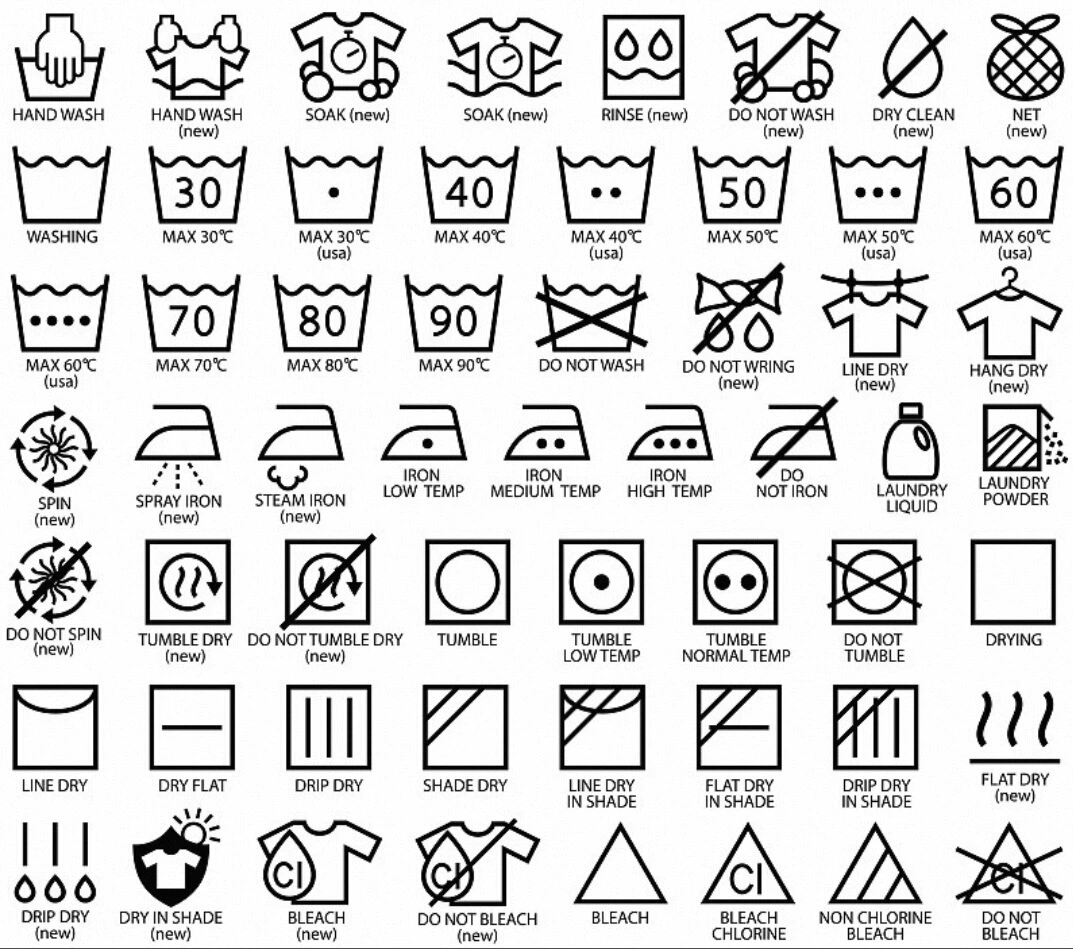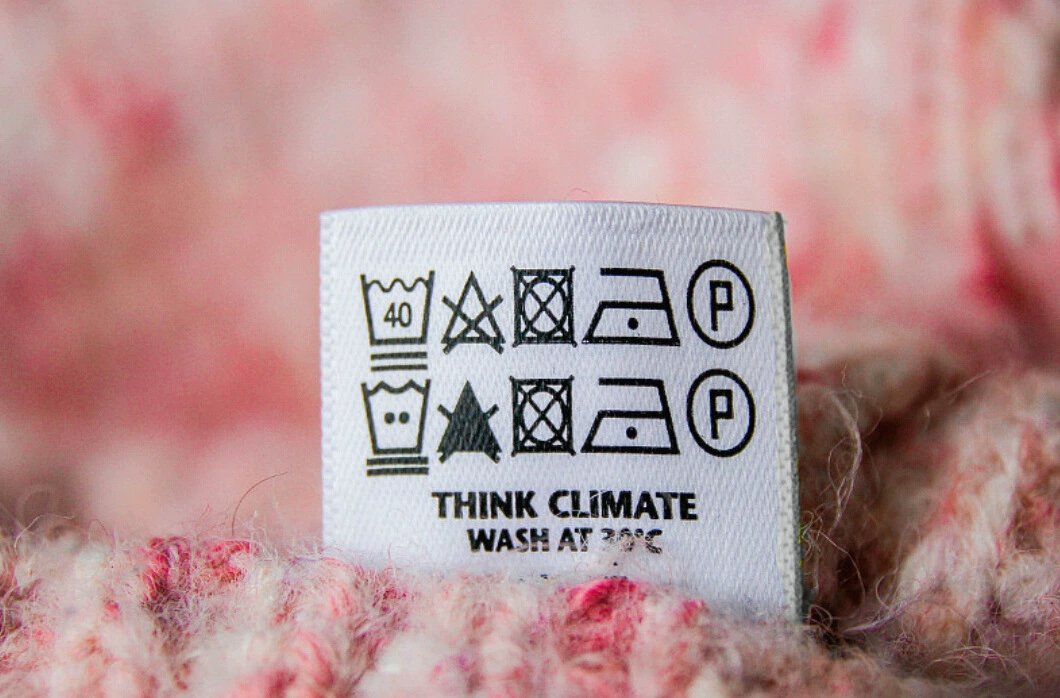Understanding the Basics of Clothing Labels
Clothing labels are often overlooked but are a wealth of information when it comes to understanding the garment you’re holding. These small tags attached to the inside of clothing give you the details on fabric content, care instructions, the country of origin, and the manufacturer. By becoming familiar with the basic layout and information provided, you can make more informed decisions about your purchases.
Firstly, clothing labels will typically list the materials the garment is made from. This is crucial for understanding how the piece should be cared for and if it meets your personal preferences or needs, such as allergies to specific fabrics.
Secondly, you will find care instructions indicated by symbols or written guidelines describing how to wash, dry, and iron the garment. Following these instructions can help you maintain the quality and longevity of the clothing.
Additionally, the label might include the brand and size, which varies significantly across different markets and brands. Recognizing what sizing system is used can make fitting a simpler process, especially when dealing with international sizes.
Lastly, manufacturer and country of origin details tell you where and by whom the clothing was made. This information is becoming increasingly important for consumers concerned with ethical manufacturing and supporting fair labor practices.
Understanding these basics of clothing labels not only enables you to take better care of your garments but also empowers you to make choices that align with your values and style preferences. With this foundational knowledge, you’re on your way to becoming an expert in decoding fashion’s hidden messages.

Interpreting Symbols on Fabric Care Labels
When assessing how to care for your clothing, the fabric care labels are your go-to guide. These labels, often sewn into the seam of a garment, are filled with symbols that can seem like a cryptic language at first glance. Interpreting these symbols correctly is essential to maintain the quality and longevity of your clothes. Here’s a rundown of the most common symbols you’ll encounter:
- The Washing Symbol: This looks like a small bucket filled with water. The number inside the bucket indicates the maximum washing temperature. Dots inside the symbol denote temperature levels – one for low, two for medium, and three for high. Lines under the bucket suggest a gentler washing cycle, with one line for a mild wash and two lines for very mild treatments.
- The Bleaching Symbol: A triangle symbol indicates whether or not you can use bleach on the garment. A plain triangle permits bleaching when needed, while a triangle crossed out means no bleach should be used.
- The Drying Symbol: This symbol looks like a square and will either have a circle inside it—which denotes tumble drying—or line(s) in the square for natural drying. Dots inside the tumble dry symbol are used to indicate the heat setting, similar to the washing symbol. A cross over the square indicates that tumble drying is not recommended.
- The Ironing Symbol: Represented by an iron, the number of dots inside corresponds to the temperature setting of the iron; from one dot for low heat to three dots for high heat. A crossed-out iron means that the item should not be ironed.
- The Dry Cleaning Symbol: A circle implies that the garment is suitable for dry cleaning. Letters inside the circle provide additional instructions to the dry cleaner about the type of solvents that may be used.
By understanding how to interpret these symbols on fabric care labels, you can prevent accidental damage to your clothes and keep them looking their best for as long as possible. Keep a reference card handy until you become familiar with these symbols, or consult online guides for quick help when doing laundry.
Identifying Material Content and Quality on Clothing Labels
When you’re sifting through racks of clothing, the material content and quality are critical factors that can significantly influence your purchasing decision. Understanding what’s written on the label regarding the fabric can help you predict how the garment will feel, behave over time, and how to care for it.
Textile quality is usually indicated by the type of fibers used and their proportions. Natural fibers like cotton, wool, silk, and linen are often highly regarded for their breathability and durability. However, synthetic fibers such as polyester, nylon, and acrylic are widely used in fashion for their resilience and lower cost. Blended materials, which combine natural and synthetic fibers, offer a balance of properties from both groups.
To identify the material content on a clothing label, look for a breakdown of fiber types listed by their percentage of the total composition. For example, “50% cotton, 50% polyester” indicates a blend designed to offer the comfort of cotton with the durability of polyester. Recognizing these components helps you to understand how the garment will feel against your skin, how it might stretch or hold its shape, and how it should be washed.
Moreover, the feel of the textile on your skin can also indicate quality. A softer, smoother feel often signifies finer threads and a tighter weave or knit, which typically correlate with higher quality. Conversely, a rough or stiff texture might suggest a lower-quality fabric.
Remember, clothing labels provide key insights into the material content and quality, enabling you to choose garments that align with your comfort, lifestyle, and maintenance preferences. Always take a moment to check the label, and with practice, you’ll become adept at recognizing quality textiles that meet your standards.

Learning About Country of Origin and Manufacturer Information
When purchasing clothing, it’s easy to overlook the significance of the country of origin and the manufacturer information found on the label. However, these details offer more than just a glimpse of where the garment was made; they provide important insights into the production standards, labor conditions, and the overall quality you can expect from the piece.
The country of origin indicates where a garment was produced. This matters because different countries may have various strengths in textiles and garments. For instance, Italy is renowned for luxury fabrics and tailoring while countries like Bangladesh may be associated with mass-produced goods. Knowledge of these reputations can guide expectations about the craftsmanship and durability of the clothing.
Additionally, the country of origin can signal the ethical considerations of the manufacturing processes. Countries with stricter labor laws should, in theory, assure consumers that workers are treated fairly, though this isn’t always the case. Awareness of global labor issues can lead consumers to make more informed choices, potentially supporting brands that prioritize ethical manufacturing.
Manufacturer information offers another layer of insight. Knowing who made the clothing can help in assessing the brand’s reputation. Brands with a commitment to quality often have longstanding relationships with specific manufacturers known for their expertise.
Furthermore, tracing the manufacturer can be beneficial in the event of product recalls or for verifying the authenticity of the garment, particularly in combating counterfeit goods. For those who aim to support local economies or have preferences for artisanal over industrial production, this information is quite valuable.
Recognizing the importance of the country of origin and manufacturer details empowers consumers to make purchases that align with their values, be it in quality, ethical production, or supporting certain economies. In a world where conscious consumerism is more relevant than ever, these aspects of clothing labels serve as essential guides.
Making Sense of Sizing and International Size Conversion
When shopping for clothing, one of the most common challenges is finding the right size, especially when dealing with international brands. Clothing sizes can vary widely from country to country, and this is where understanding sizing on clothing labels, and mastering international size conversion, becomes crucial.
International size conversion charts are essential tools for shoppers and travelers who are buying clothes from different countries. These charts help you to compare your known size within your country’s standard to the corresponding size in another country’s system. Variations exist not just between the US, UK, and EU sizes, but also between brands, which can make this process even more complicated.
Here’s a basic guide to help you decode the sizes:
- US to UK: For women’s clothing, the UK size is generally 2 sizes smaller than the US size. So, a US size 6 would be a UK size 10. For men, the sizing is generally more consistent with the US and UK sizes.
- US to EU: European sizes are typically measured in centimeters. Conversion can vary, but for women’s clothing, you can estimate an EU size by adding 30 to the US size (US size 6 would be approximately EU size 36).
- International Jeans Sizes: When it comes to jeans, sizes often come in waist measurements in inches, so they can be easier to convert. However, understanding the difference between waist and length measurements is key.
Keep in mind, many brands now offer online size guides that include measurements in cm or inches for various parts of the body, which can be a more accurate way to select your size. Additionally, some brands provide international conversion charts directly on their labels or websites to help simplify things for you.
Decoding international sizes requires a little research and sometimes a bit of trial and error. But by familiarizing yourself with the basic conversions and utilizing brand-specific sizing charts, you can shop confidently and find clothing that fits well, no matter where it’s from.
Learn more about how to be an expert on shopping.


